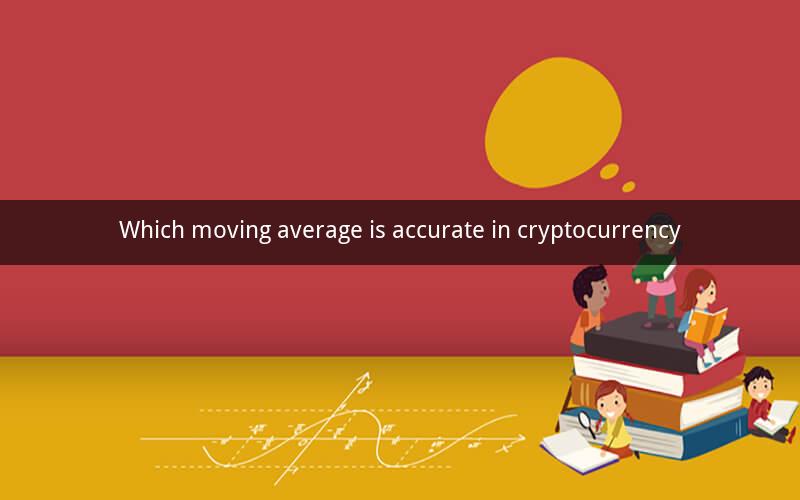
Cryptocurrency Moving Averages: A Comprehensive Guide
Table of Contents
1. Introduction to Moving Averages in Cryptocurrency
2. Types of Moving Averages
2.1 Simple Moving Average (SMA)
2.2 Exponential Moving Average (EMA)
2.3 Weighted Moving Average (WMA)
2.4 Volume Weighted Moving Average (VWMA)
3. Choosing the Right Moving Average for Cryptocurrency
4. The Accuracy of Moving Averages in Cryptocurrency
5. Advantages and Disadvantages of Different Moving Averages
6. Conclusion
1. Introduction to Moving Averages in Cryptocurrency
Moving averages are widely used in technical analysis to identify trends and potential entry and exit points in the cryptocurrency market. They are calculated by taking the average price of a cryptocurrency over a specific period and plotting it on a chart. This article aims to provide a comprehensive guide to different moving averages and their accuracy in the cryptocurrency market.
2. Types of Moving Averages
2.1 Simple Moving Average (SMA)
The Simple Moving Average (SMA) is the most basic type of moving average. It calculates the average price of a cryptocurrency over a given time period and plots it on a chart. The formula for SMA is as follows:
SMA = (Sum of Prices) / (Number of Time Periods)
2.2 Exponential Moving Average (EMA)
The Exponential Moving Average (EMA) is a type of moving average that gives more weight to recent prices. It is calculated using the following formula:
EMA = (Price - Previous EMA) Multiplier + Previous EMA
2.3 Weighted Moving Average (WMA)
The Weighted Moving Average (WMA) assigns different weights to each price in the time period. The formula for WMA is as follows:
WMA = (Weight1 Price1 + Weight2 Price2 + ... + WeightN PriceN) / (Sum of Weights)
2.4 Volume Weighted Moving Average (VWMA)
The Volume Weighted Moving Average (VWMA) is a type of moving average that considers both price and volume. It is calculated using the following formula:
VWMA = (Sum of (Price Volume)) / (Sum of Volume)
3. Choosing the Right Moving Average for Cryptocurrency
Choosing the right moving average for cryptocurrency trading can be challenging, as different traders have different preferences. However, some factors can help you make an informed decision:
- Time Frame: Short-term traders may prefer using shorter-term moving averages, such as the SMA or EMA, while long-term traders may opt for longer-term moving averages, such as the WMA or VWMA.
- Market Volatility: In highly volatile markets, shorter-term moving averages may be more effective in identifying trends and potential trading opportunities.
- Personal Preference: Ultimately, the choice of moving average depends on your trading style and experience.
4. The Accuracy of Moving Averages in Cryptocurrency
The accuracy of moving averages in cryptocurrency trading can vary depending on several factors:
- Market Conditions: Moving averages can be more accurate during trending markets, while they may be less reliable during sideways or choppy markets.
- Time Frame: Short-term moving averages may be more accurate in identifying short-term trends, while long-term moving averages may be more accurate in identifying long-term trends.
- Data Quality: The accuracy of moving averages can also be affected by the quality of the data used to calculate them.
5. Advantages and Disadvantages of Different Moving Averages
5.1 Simple Moving Average (SMA)
Advantages:
- Easy to calculate and understand.
- Provides a clear picture of the overall trend.
Disadvantages:
- Ignores recent price changes.
- Can be affected by outliers.
5.2 Exponential Moving Average (EMA)
Advantages:
- Gives more weight to recent price changes.
- More responsive to market movements.
Disadvantages:
- More complex to calculate.
- Can be sensitive to short-term price fluctuations.
5.3 Weighted Moving Average (WMA)
Advantages:
- Assigns different weights to each price, providing a more accurate representation of the trend.
- Less affected by outliers.
Disadvantages:
- More complex to calculate than SMA and EMA.
- May be less responsive to market movements.
5.4 Volume Weighted Moving Average (VWMA)
Advantages:
- Considers both price and volume, providing a more comprehensive view of the market.
- Less affected by outliers.
Disadvantages:
- More complex to calculate than SMA, EMA, and WMA.
- May be less responsive to market movements.
6. Conclusion
Moving averages are valuable tools in technical analysis for identifying trends and potential trading opportunities in the cryptocurrency market. While no moving average can guarantee accuracy, understanding the different types and their advantages and disadvantages can help you make informed decisions. Ultimately, the best moving average for you will depend on your trading style, experience, and market conditions.
Questions and Answers
1. What is the difference between SMA and EMA?
- SMA calculates the average price over a given time period, while EMA gives more weight to recent price changes.
2. Can moving averages be used in all market conditions?
- No, moving averages can be less reliable during sideways or choppy markets.
3. What is the formula for calculating the SMA?
- SMA = (Sum of Prices) / (Number of Time Periods)
4. How does the EMA formula differ from the SMA formula?
- The EMA formula includes a multiplier that gives more weight to recent prices.
5. What is the advantage of using the WMA over the SMA?
- The WMA assigns different weights to each price, providing a more accurate representation of the trend.
6. Can VWMA be used for short-term trading?
- Yes, VWMA can be used for both short-term and long-term trading.
7. What is the main disadvantage of using the EMA?
- The EMA can be sensitive to short-term price fluctuations.
8. How can a trader determine the best time frame for a moving average?
- The best time frame depends on the trader's trading style and experience.
9. What is the primary advantage of using the VWMA?
- The VWMA considers both price and volume, providing a more comprehensive view of the market.
10. Can moving averages be used in isolation?
- No, moving averages should be used in conjunction with other technical indicators and analysis methods for a more accurate trading strategy.